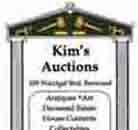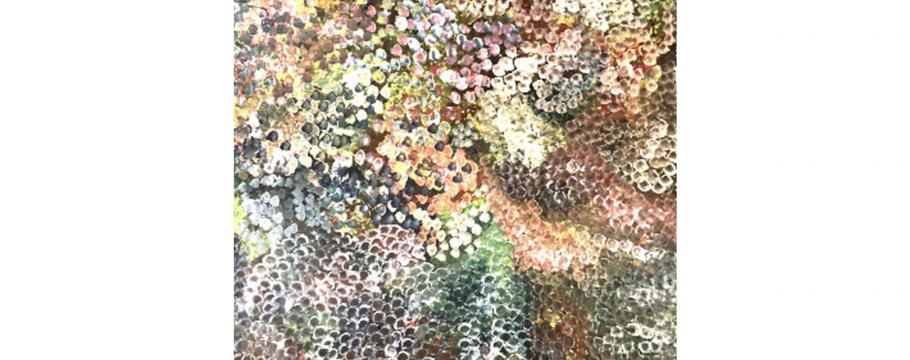
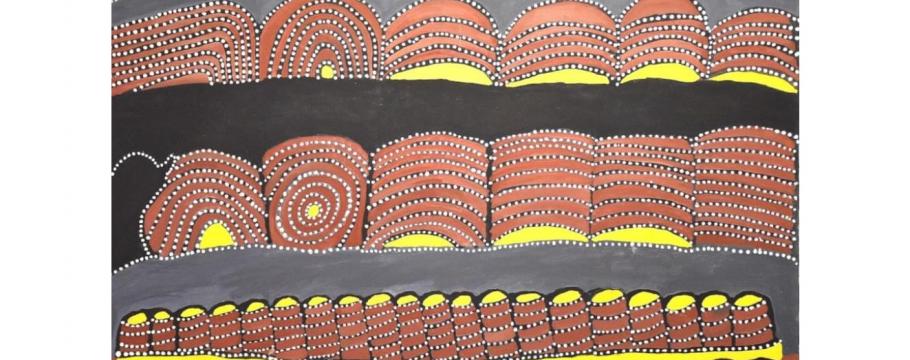


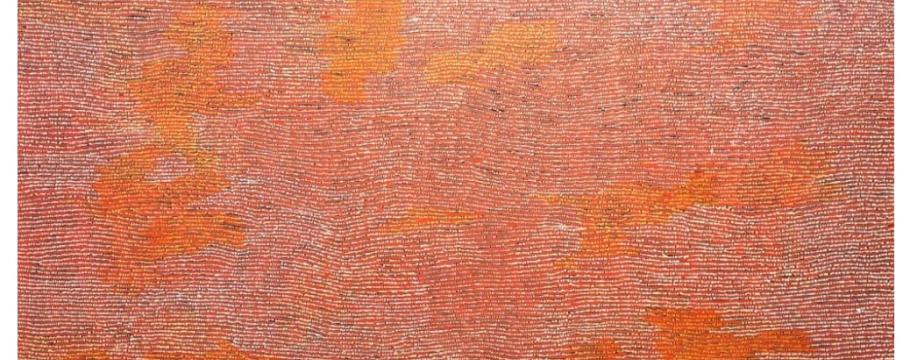
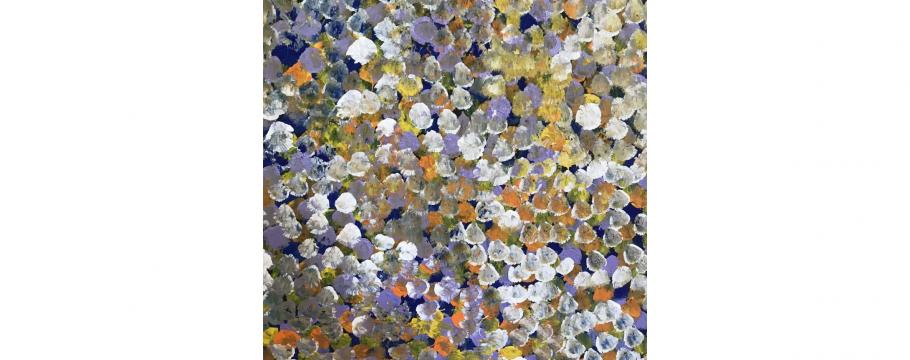
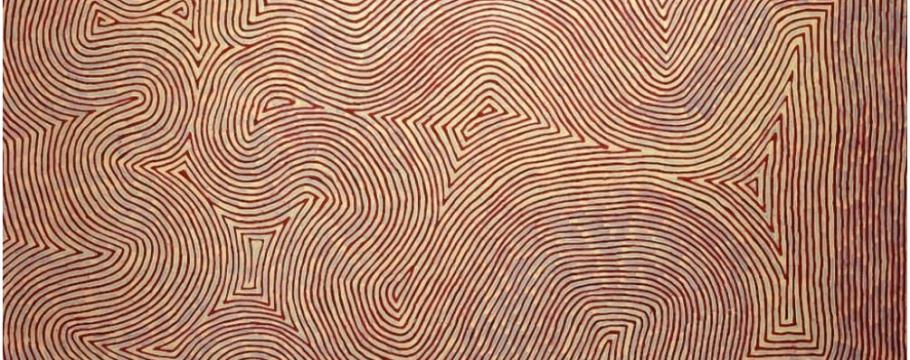
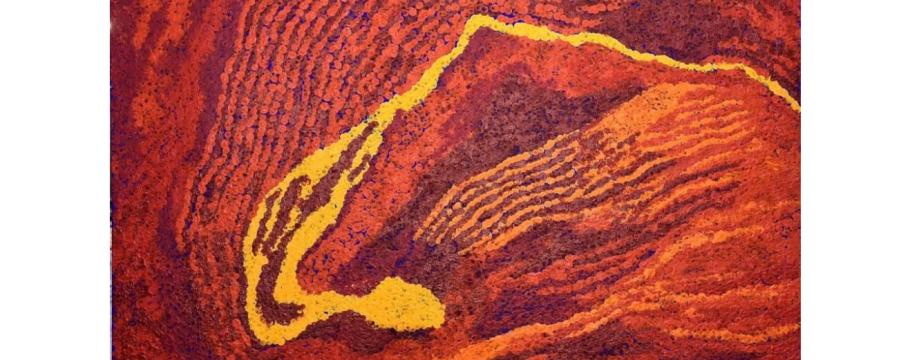

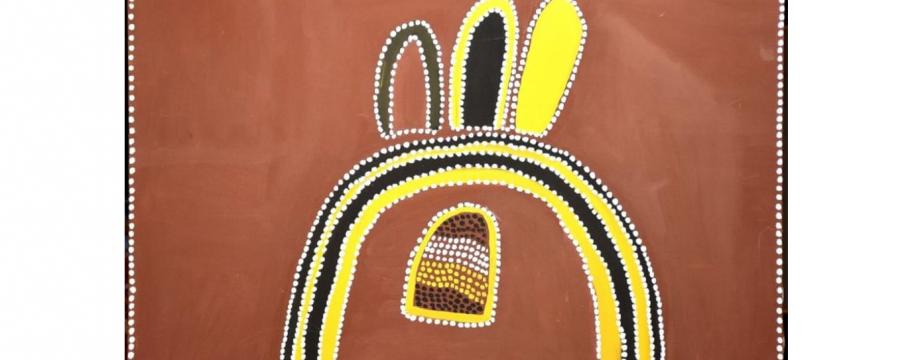
Significant Australian Aboriginal gallery art heads to auction
Author: Richard Brewster | Posted: 23rd July, 2021
A fifth Victorian COVID-19 pandemic lockdown in 16 months has not dented Melbourne’s Original and Authentic Aboriginal Art Gallery in Bourke Street enthusiasm for auctioning some of the best examples of Australian indigenous art in living memory.
Established in 1996 as a showcase for Aboriginal fine art from the Central Western Desert, Western Australia’s Kimberley region and the Northern Territory’s Arnhem Land, the gallery has asked Christian McCann Auctions to auction the 266 works online from 12pm Sunday July 25.
The sale was originally scheduled to be held live on site but COVID-19 restrictions introduced on Friday July 16 put paid to that idea.
Most of the paintings have been bought direct from the artists and have irrefutable provenance and certificates of authenticity. Some are listed from as little as $500 in catalogue estimates.
Gallery director and curator Alexis Hessen says the auction is an important step in increasing understanding of Australian Aboriginal history and culture.
“Apart from rock art in isolated cave sites, much of the culture is ephemeral and has not been permanently recorded because it manifested itself in body painting and drawings in the sand,” she said.
“Once Aboriginal peoples were given the materials to make lasting paintings (beginning in the 1950s in various Aboriginal settlements and including the famous Central Desert Papunya works of the 1970s), the overall history has become much more concrete.”
There is no greater exponent of this than Australia’s iconic Aboriginal artist Emily Kame Kngwarreye (c1910-1996) whose major work Wild Kame Flower Dreaming (lot 33 in this auction) has an upper catalogue estimate of $380,000.
Arguably the country’s most significant indigenous artist, her comprehensive exhibition Utopia: The Genius of Emily Kame Kngwarreye was curated by the National Museum of Australia and in 2008 taken to Japan.
On display at both the National Museum of Art in Osaka and the National Art Centre in Tokyo from February to July, it was the most successful contemporary art blockbuster ever seen, breaking Andy Warhol’s 10-year record by 40,000 visitors.
There are plenty of other well-known Aboriginal artist works in the auction – many of which will probably find homes overseas. Most of these artists feature in major gallery collections both in Australia and other countries.
One is Jack Britten’s (1920-2002) Bungle Bungles ochres on canvas (lot 35) and another Warlimpirgna Tjapaltjarri (Lost Tribe) Lake Mackay, Homelands (lot 37).
Britten’s first memories of seeing white Europeans for the first time were while he sat with his family in the hills of his home country.
Born Yalatji, he was raised in Tickalara, west of the Kimberley region’s Bungle Bungle Range, and was given his artist name by the station manager Jack Britten who took him under his wing.
A talented horseman, Britten was taught traditional Aboriginal painting methods by his grandparents and began his art practice at Guda Guda earlier than Turkey Creek contemporaries such as the also iconic indigenous Rover Thomas.
Born about 1958, Warlimpirgna Tjapaltjarri is part of the “Lost Tribe” living so remotely in the Australia’s Gibson Desert that members only made contact with white Australians in 1984.
The auction painting is cited as the closest example of an Aboriginal painting untouched by European influence in existence and features many aspects of traditional stories such as landforms, camouflage and inherited tales.
In the same untouched category is Yukultji Napangati’s (Lost Tribe) Pintupi Lost Tribe Women’s Travels from Yunala (lot 36).
Born in 1970 near Lake Mackay in Western Australia – and also part of the “Lost Tribe” – she was another who as a teenager saw white Australians for the first time.
Her paintings tell tribal stories from a woman’s viewpoint and include travelling and the gathering of various bush foods, such as bush banana and silky pear vines, and are featured in many Australian and overseas gallery collections.
Representing several generations, Napangati still lives a semi-subsistence rotational life in her traditional homeland and possesses an intimate knowledge of the plants she paints.
Lot 34 features (another gallery icon) Willy Tjungaurrayi’s (1930-2018) major work Kaakuratintja Dreaming. The artist is highly regarded for his paintings of Tingari Dreaming stories and was part of the 1976 Papunya Tula Artists movement after relocating from his Wilkinkarra birthplace.
His work centres on sacred dreamings within the realms of men’s business and references the landscape traversed by the Tingari during the creation period.
Polly Ngale’s Anrwetky Dreaming (Bush Plum) (lot 62), characterised by vibrant colours, is a typical example of her knowledge of bush food species in various stages of decay.
From a family of well-known artists, Polly was born circa 1940 and, as a senior custodian, her works focus on important stories from her birth country Alparra, Urupuntja in the Central Desert.
Lot 79 is the major work After Tingari by George Hairbrush Tjungurrayi, Willy’s younger brother, who also was part of the Papunya Tula artists.
Known by his nickname Hairbrush, George’s paintings (which are among treasured gallery collections worldwide) refer to his ancestral land stories including references to men’s body paint and the Wunda, a camouflage shield design.
Other paintings of interest include Tommy Watson Yannima Pikarli’s (1935-2018) ‘Ilyark’ Country Dreaming (lot 80), Ray James Tjangala’s Tingari (lot 81) and Goody Barrett’s Gija Three Women (lot 40).



